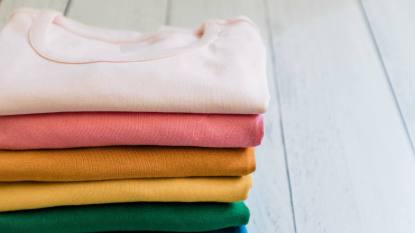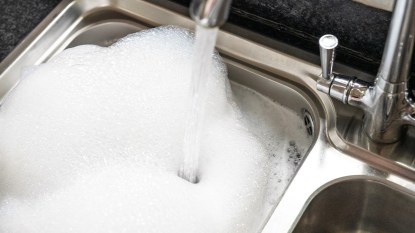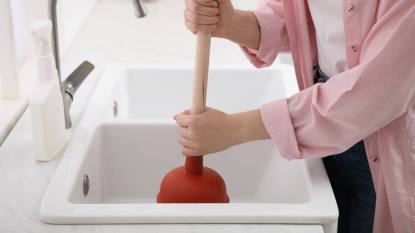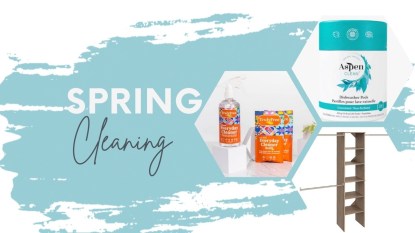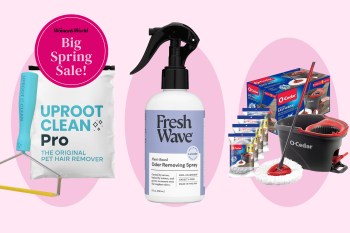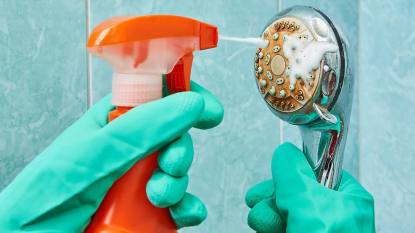The #1 Easiest Way To Reverse Thinning Hair: Clean Your Hairbrush Regularly
Celebrity hairstylist reveals the best way to clean your brush to keep your mane thick and shiny
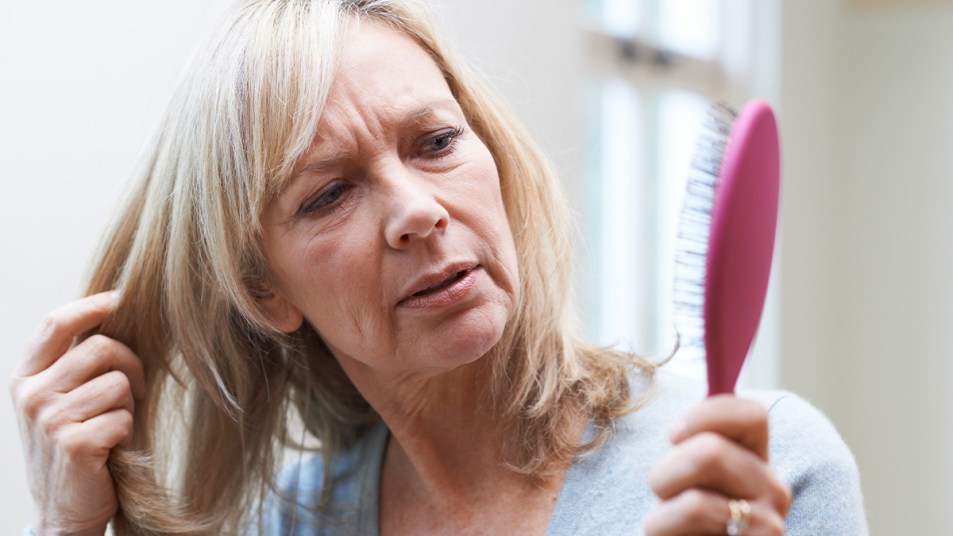
If you’re like us, over the last few years you’ve noticed your hairbrush accumulating more than its fair share of hairs. And as daunting as that is for our once much fuller manes, knowing what else is in your hairbrush may have you running to clean it out stat. Over time, hairbrushes can also accumulate product residue, dust and dead skin (yikes!) which you’re simply putting back on your hair with each brush. This can actually cause you to lose more hair and make the hair on your head look dull and lifeless.
While it’s easy to forget to clean your hairbrush, given all your other cleaning and upkeep needs, the good news is that learning how to clean a hairbrush isn’t difficult, and once you know the basics, you’ll have no problem cleaning it regularly without even thinking about it. Sarah Potempa, celebrity hairstylist and The Beachwaver Co. founder, shares her pro tips for getting your hairbrush (and your hair!) to look like like new.
Why cleaning your hairbrush can lead to thicker hair
There’s good reason to clean your hairbrush regularly — a clean brush can improve scalp health, and scalp health is essential to hair growth. If you’ve been experiencing increased shedding, you may notice a larger than usual buildup of hairs in your brush, and running a dirty brush through your hair again and again can cause even more strands to fall out.
“I find that the best way to keep your brushes clean and free of stubborn hair buildup is to make it a habit to clean stay hairs out of your brush weekly or even daily,” says Potempa. She points out that if you stay on top of taking the hairs out of your brush regularly, deep cleaning the brush will be more manageable.
Once you see how easy it is to clean your hairbrush, you’ll be able to effortlessly add it into a cleaning rotation.
The best way to clean a hairbrush in 2 easy steps
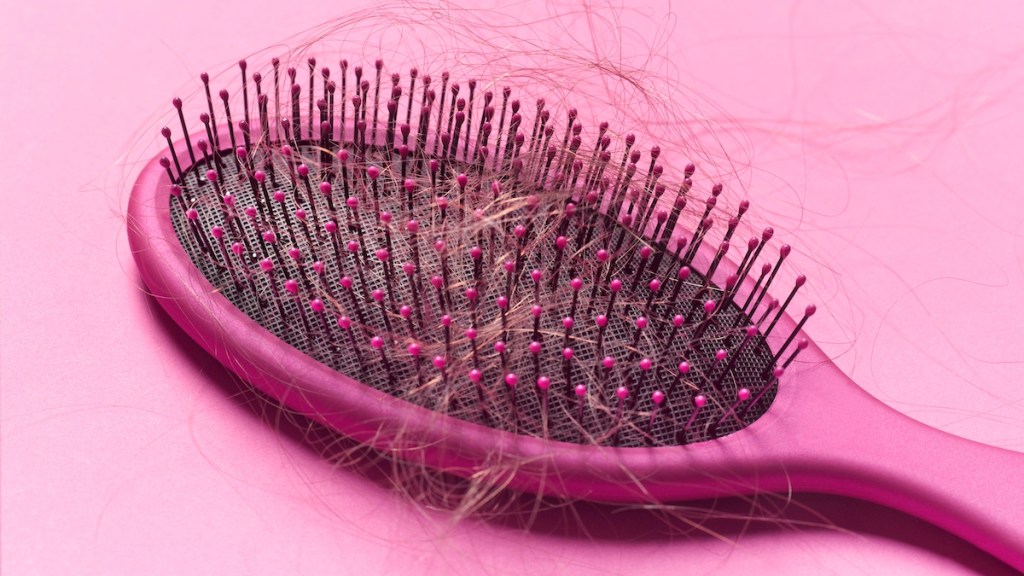
We all know that cleaning your hairbrush involves pulling the hair out of the brush, and Potempa tells Woman’s World that there’s an easy cleaning technique she uses to get the trapped hairs out. But it’s what she does afterwards that really makes all the difference.
Step 1: Use *this* tool to clear all hair out of the brush
Your hairbrush probably has a lot of hairs trapped in its bristles. Before you do a deep clean, you need to remove these pesky strands. “To clear my brush from stray hairs, I use a fine-tooth rat tail comb to get under the hair and lift it out of the bristles,” Potempa says. A fine-tooth comb (Buy from Amazon, $5.99 for a set of two) lets you get into the crevices of your brush to remove even the most stubborn hairs, and you can use the comb’s pointy end for between-bristle precision. If you don’t have a comb, you can also use a pointy object like a pen, pencil or chopstick to really dig in.
Step 2: Clean your brush using baby shampoo and a toothbrush
After you’ve successfully removed the hair, it’s time to cleanse your brush. This will get rid of any grayish gunk trapped in the brush, and eliminate any yucky scents that may have built up. “I use a shampoo and water mixture to cleanse all my hair tools,” Potempa explains. It’s best to use a mild shampoo without a strong fragrance (baby shampoo can do the trick), or you could also use a mild dish soap like Dawn. “After scrubbing the cleanser into the brush, I use a clean toothbrush to really get in there, rinse it and allow it to dry before the next use,” she says.
Most plastic brushes can simply be laid face-down on a clean, dry towel and left to dry overnight. Same goes for brushes with fabric or soft padding — but you may want to blow-dry them with a hair dryer if you happen to live in a humid place.
Wooden brushes or brushes with natural bristles should ideally be hung to air-dry overnight.
How *not* to clean a hairbrush
If you’re in a rush, you might be tempted to throw your hairbrush in the sink and call it a day, but Potempa cautions against this. “I recommend not submerging or soaking your tools in any liquids when cleaning them,” she says, noting that “It isn’t necessary when clearing the tools from hair and can cause more damage than good.” This is particularly damaging if your brush is made of wood, as submerging it can cause the material to soften or even fall apart, she says. While it is safe to submerge a plastic brush, Potempa doesn’t think it’s usually needed.
How to clean different types of brushes
There are many different kinds of hairbrushes out there. Potempa follows the same cleaning process for all brushes, but notes that, “brushes with dense or mixed bristles meant for smoothing can be more difficult to clean than brushes that are meant to detangle.”
She says these mixed brushes, which may feature some combination of metal, boar and nylon bristles, can require more cleaning, since there are tighter crevices for hairs and buildup to get caught in. Detangling brushes, which often feature synthetic bristles, are easier to clean, since there’s more space in between the bristles.
Want to see the hairbrush-cleaning process in action? This video from hairstylist and influencer Kayley Melissa features a step-by-step guide to cleaning a variety of different types of brushes.
Clean brush, happy hair!
No matter what kind of hairbrush you use, there’s an easy and effective way to clean it. Once you know how to do it, you’ll find it’s a cinch to incorporate hairbrush-cleaning into your routine. And trust us, your hair will thank you for it.
Check out more ways to ensure healthy hair by clicking on these stories:
Sunburned Scalp Can Cause Hair Loss — Dermatologists’ Top Tips for Total Protection
Top Dermatologists Say A Common Sleep Aid Can Also Reverse Thinning Hair


